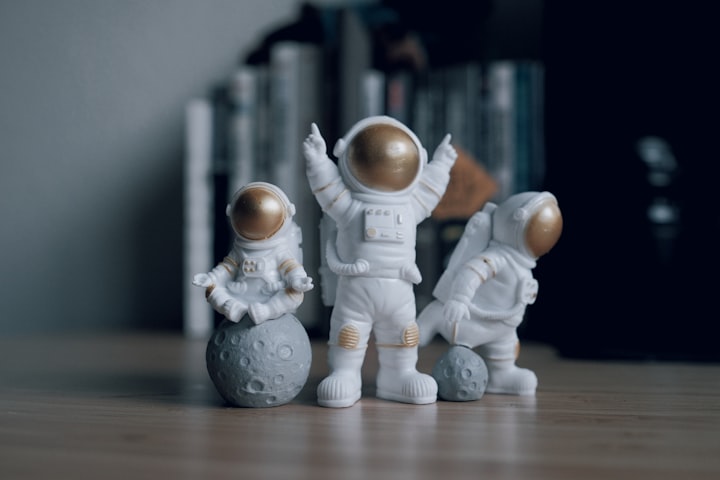The profession of an astronaut is undoubtedly one of the most intriguing and mysterious occupations in the world. Yet, beneath the glamour of space exploration lies a gritty reality that most of us never get to see. One of the aspects of an astronaut's everyday life that often goes unexplored is the challenge of maintaining hygiene and cleanliness while in the extreme environment of space.
Everyday Life in Space
Contrary to popular belief, astronauts do not wear paper underwear in space, nor do they rely on the lack of gravity to magically remove grime. Instead, they have to adapt to a unique set of circumstances that make laundry and personal hygiene far more challenging than on Earth.
One significant constraint astronauts face is the scarcity of water on the International Space Station (ISS). Water is a precious resource in space, and using it for something as mundane as laundry is not practical. As a result, astronauts often have to wear their clothes for extended periods, much longer than they would on Earth. For instance, some astronauts have admitted to wearing the same pair of shorts for months and changing their underwear only once every 3 or 4 days.
Astronauts prioritize comfort and convenience over fashion in their clothing choices. Their typical attire inside the ISS consists of short-sleeved shirts and long cargo pants, similar to what we wear on Earth. However, when they venture outside the climate-controlled confines of the ISS, they don chunky spacesuits. These suits serve as a vital protective barrier against the harsh conditions of space, including extreme temperatures ranging from 250°F in the sun to -250°F in the shade.
Spacesuits and the Challenge of Staying Clean
Spacewalks, known as extravehicular activities or EVAs, are a critical part of an astronaut's job. These spacewalks often involve hours of strenuous work, and even with cooling systems and layers of insulation, astronauts can work up a sweat inside their suits.
What's underneath these spacesuits is a matter of concern. Astronauts wear form-fitting undergarments that are often reused and sometimes shared. With no washing machines available on the ISS, maintaining hygiene becomes a considerable challenge. The absence of laundry facilities means that astronauts need to be strategic in managing their clothing.
One peculiar aspect of astronaut life is that there is a specially trained person whose job is to smell everything astronauts take with them into space. This unusual task is carried out to protect astronauts from unpleasant or toxic odors since the confined environment of the ISS cannot easily be ventilated. While steps are taken to address odors, the challenge of hygiene remains.
Moreover, the issue of biocontamination becomes increasingly worrisome, especially during longer missions. Bacteria, body fluids, and other foreign substances can accumulate inside spacesuits over time. Extended missions, such as those to the Moon, require spacesuits with a lifespan of up to 6 years, making microbial contamination a pressing concern.
To combat this problem, NASA, along with the European Space Agency and other organizations, has explored various methods to eliminate microbes and bacteria from spacesuits. These methods include textiles infused with antimicrobial substances like copper, silver, and silicone. After extensive research, a solution of silver molecules, commonly used for disinfecting hospital dressings, emerged as the most effective in preventing microbial buildup.
The Future of Space Suits
In 2022, NASA enlisted the help of U.S. companies Axium Space and Collins Aerospace to develop the next generation of spacesuits. These suits are intended for use during the EMIS-3 mission, which aims to land a crew at the South Pole of the Moon. The spacesuits for this mission will incorporate textiles with antimicrobial properties to reduce biocontamination. Additionally, the cooling system in these suits will introduce biocides into the water loops, further preventing microbial growth.
Types of Space Suits and Their Importance
There are two main types of spacesuits used by astronauts. The Advanced Crew Escape Suit, often referred to as the orange suit or pumpkin suit, is worn during liftoff and landing. These suits are equipped with essential survival gear, including flares, medications, radios, and parachutes, ensuring astronauts' safety during emergencies.
On the other hand, Extravehicular Mobility Units (EVA suits) are worn during spacewalks. These suits are bulkier and contain multiple layers of insulation, along with life support systems providing breathable air, drinkable water, and temperature controls. EVA gloves have built-in heaters to keep astronauts' fingers warm in the extreme cold of space.
In conclusion, while the life of an astronaut may seem glamorous, the challenges they face in terms of maintaining hygiene and cleanliness in the unforgiving environment of space are significant. With innovative solutions and ongoing research, space agencies like NASA are working to ensure that future space missions are not only safe but also hygienic for astronauts, enabling them to explore the cosmos while staying as clean as possible.







Comments
There are no comments for this story
Be the first to respond and start the conversation.